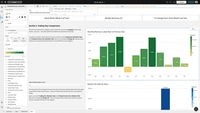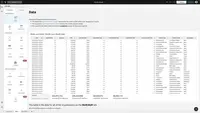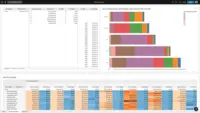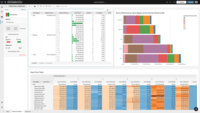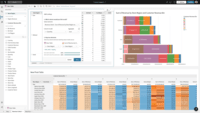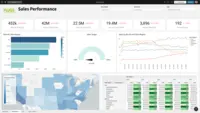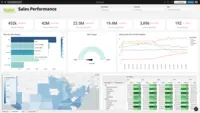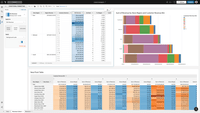Overview
What is Sigma?
Sigma Computing headquartered in San Francisco provides a suite of data services such as code free data modeling, data search and explorating, and related BI and data visualization services.
How Sigma Differs From Its Competitors
Awards
Products that are considered exceptional by their customers based on a variety of criteria win TrustRadius awards. Learn more about the types of TrustRadius awards to make the best purchase decision. More about TrustRadius Awards
Popular Features
- Drill-down analysis (150)8.585%
- Report sharing and collaboration (156)8.282%
- Customizable dashboards (155)7.777%
- Formatting capabilities (157)7.373%
Reviewer Pros & Cons
Pricing
Entry-level set up fee?
- Setup fee optional
Offerings
- Free Trial
- Free/Freemium Version
- Premium Consulting/Integration Services
Would you like us to let the vendor know that you want pricing?
155 people also want pricing
Alternatives Pricing
Features
Product Details
- About
- Integrations
- Competitors
- Tech Details
- Downloadables
- FAQs
What is Sigma?
Sigma is a business intelligence (BI) and analytics platform purpose-built for the cloud. With Sigma, anyone can use the spreadsheet functions and formulas they already know to explore live data at cloud scale, down to the lowest grain of detail. Its familiar spreadsheet-like interface delivers SQL into the hands of any user while keeping data fresh and secure within cloud data warehouses.
Data-first companies can use Sigma to empower their employees, customers, and partners to break free from the confines of the dashboard and explore data for themselves to make better, faster decisions. The software was built to capitalize on the performance power of cloud data warehouses to combine data sources and analyze billions of rows of data instantly – no coding required.
Sigma Features
BI Standard Reporting Features
- Supported: Pixel Perfect reports
- Supported: Customizable dashboards
- Supported: Report Formatting Templates
Ad-hoc Reporting Features
- Supported: Drill-down analysis
- Supported: Formatting capabilities
- Supported: Predictive modeling
- Supported: Report sharing and collaboration
Report Output and Scheduling Features
- Supported: Publish to Web
- Supported: Publish to PDF
- Supported: Output Raw Supporting Data
- Supported: Report Versioning
- Supported: Report Delivery Scheduling
- Supported: Delivery to Remote Servers
Data Discovery and Visualization Features
- Supported: Pre-built visualization formats (heatmaps, scatter plots etc.)
Sigma Screenshots
Sigma Videos
Sigma Integrations
Sigma Competitors
Sigma Technical Details
| Deployment Types | Software as a Service (SaaS), Cloud, or Web-Based |
|---|---|
| Operating Systems | Unspecified |
| Mobile Application | Mobile Web |
| Supported Countries | United States, Canada |


